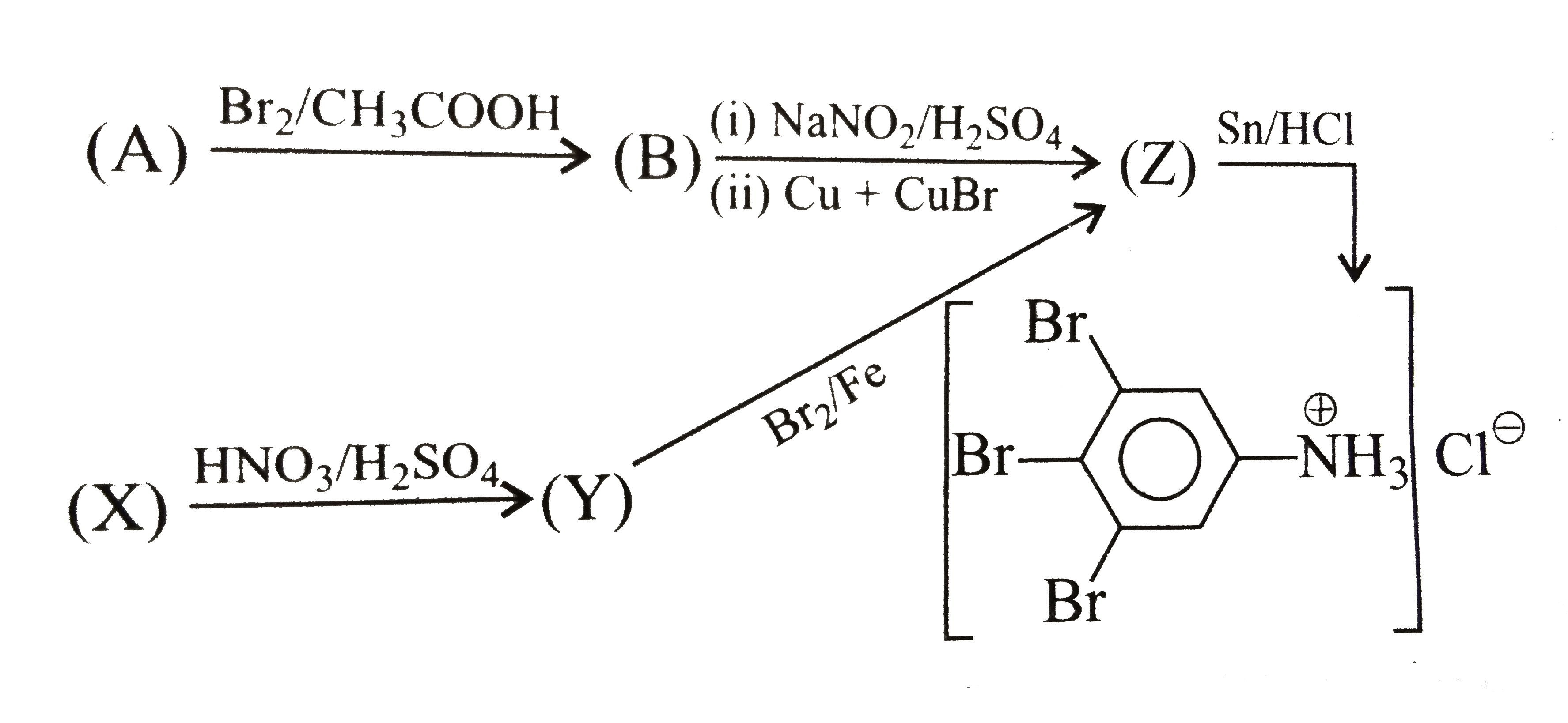Convert m- dinitrobenzene to m-nitro aniline.
To convert m-dinitrobenzene to m-nitroaniline, we can follow these steps:
Step 1: Identify the Structure of m-Dinitrobenzene
m-Dinitrobenzene has two nitro groups (-NO2) attached to a benzene ring at the meta positions. The structure can be represented as follows:
NO2|C6H4−C6H4|NO2
Step 2: Select a Reducing Agent
To convert m-dinitrobenzene to m-nitroaniline, we need to reduce one of the nitro groups to an amino group (-NH2). A suitable reducing agent for this reaction is sodium sulfide (Na2S), which is a mild reducing agent.
Step 3: Perform the Reduction Reaction
When m-dinitrobenzene is treated with sodium sulfide (Na2S), one of the nitro groups is reduced to an amino group, resulting in the formation of m-nitroaniline. The reaction can be summarized as follows:
\( \text{m-Dinitrobenzene} + \text{Na2S} \rightarrow \text{m-Nitroaniline} + \text{by-products} \)
Step 4: Write the Structure of m-Nitroaniline
After the reduction, the structure of m-nitroaniline can be represented as:
NH2|C6H4−C6H4|NO2
Final Reaction Summary
The overall reaction can be summarized as:
\( \text{C6H3(NO2)2} \xrightarrow{\text{Na2S}} \text{C6H4(NH2)(NO2)} \)
This shows the conversion of m-dinitrobenzene to m-nitroaniline.
---
m-Dinitrobenzene has two nitro groups (-NO2) attached to a benzene ring at the meta positions. The structure can be represented as follows:
To convert m-dinitrobenzene to m-nitroaniline, we need to reduce one of the nitro groups to an amino group (-NH2). A suitable reducing agent for this reaction is sodium sulfide (Na2S), which is a mild reducing agent.
When m-dinitrobenzene is treated with sodium sulfide (Na2S), one of the nitro groups is reduced to an amino group, resulting in the formation of m-nitroaniline. The reaction can be summarized as follows:
After the reduction, the structure of m-nitroaniline can be represented as:
The overall reaction can be summarized as:
Topper's Solved these Questions
- BOOK - CBSE COMPLEMENTARY MATERIALCHAPTER - AMINESEXERCISE - SHORT ANSWER QUESTION14videos
AMINES
- BOOK - CBSE COMPLEMENTARY MATERIALCHAPTER - AMINESEXERCISE - SHORT ANSWER-II TYPE QUESTION5videos
AMINES
- BOOK - CBSE COMPLEMENTARY MATERIALCHAPTER - AMINESEXERCISE - MCQ (Matching)2videos
AMINES
- BOOK - CBSE COMPLEMENTARY MATERIALCHAPTER - ALDEHYDES,KETONES AND CARBOXYLIC ACIDSEXERCISE - LONG ANSWER TYPE QUESTIONS (5 MARKS)21videos
ALDEHYDES,KETONES AND CARBOXYLIC ACIDS
- BOOK - CBSE COMPLEMENTARY MATERIALCHAPTER - BIOMOLECULESEXERCISE - SHORT ANSWER-II TYPE QUESTION13videos
BIOMOLECULES
Similar Questions
Knowledge Check
- Question 1 - Select One
Which of the following reagent converts nitrobenzene to aniline?
ASn/HClBZn/NH4OHCZn/NaOHDLiAlH4 - Question 2 - Select One
The formation of m-dinitrobenzene by heating nitrobenzene with conc H2SO4 is a/an .
Aconjugate acid-base reactionBsulphonation processCnucleophilic substitutionDelectrophilic substitution - Question 3 - Select One
Which of the following sequence is best suited to convert benzene to 3-chloro aniline?
Anitration, reduction, chlorinationBchlorination, nitration, reductionCnitration, chlorination, reductionDnitration, reduction, acetylation, chlorination, hydrolysis
How will you convert the following:
Nitrobenzene into anilineView SolutionConvert aniline to flurobenzene
View SolutionConvert: 749 cm into m
View SolutionWhen aniline is nitrated by nitric acid
(A)51%" p-nitro aniline
(B)2% o- nitro aniline
(C) 47% m- nitro aniline
(D)All are correctView SolutionStatement-1. The reaction of conc. HNO3 and conc. H2SO4 on nitrobenzene gives m- dinitrobenzene.
Statement-2. The nitro group in benzene ring decreases the electron density in the benzene ring.View Solution



